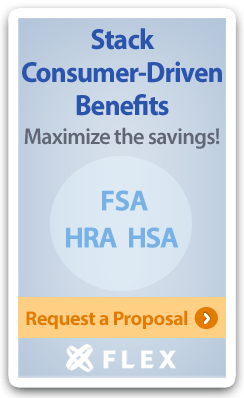Benefits Buzz
IRS Issues COBRA Subsidy FAQ

On May 18, 2021, the Internal Revenue Service (IRS) issued Notice 2021-31 with additional guidance pertaining to the COBRA subsidies authorized under the American Rescue Plan Act of 2021 (“ARPA”). The guidance is broken up into various sections and consists of 86 different frequently asked questions (FAQs). Some details summarizing the guidance has been provided below.
ELIGIBILITY FOR COBRA PREMIUM ASSISTANCE (FAQs #1-20)
These FAQs confirm that the only individuals eligible to qualify for COBRA subsidies, known as Assistance Eligible Individuals or AEIs, are those who experienced a reduction in hours or involuntary termination of employment qualifying event. In addition, AEIs must not be eligible for another group health plan or Medicare.
Employers must maintain documentation to substantiate eligibility for the COBRA subsidies. The model attestation form that the Department of Labor (DOL) developed is an acceptable form of documentation and will likely be used by most employers. Many employers may not be aware of whether a potential AEI is eligible for another group health plan or Medicare. The FAQs indicate that an employer may rely on an attestation from an individual claiming to be an AEI unless they have actual knowledge that the attestation is incorrect. This generally means the employer will not have to repay the IRS if premium assistance is provided to an individual who falsely claims to be an AEI.
The FAQs also confirm that subsidies are available for COBRA coverage periods that are extended by a disability, secondary qualifying event, or because of a state continuation coverage law. The extended time periods of coverage only qualify for a subsidy if the original qualifying event was a reduction in hours or an involuntary termination of employment.
Additionally, the FAQs confirm that only individuals who are considered qualified beneficiaries may receive subsidies. Non-qualified beneficiaries cannot receive subsidies. Examples of non-qualified beneficiaries who may be covered under COBRA are domestic partners or a spouse who is added to COBRA coverage during an open enrollment period.
REDUCTION IN HOURS (FAQs #21-23)
Examples of reduction in hours scenarios that may qualify for a subsidy include a voluntary or involuntary reduction in hours, a furlough, or a work stoppage resulting from a lawful strike.
INVOLUNTARY TERMINATION OF EMPLOYMENT (FAQs #24-34)
Examples of involuntary termination of employment that may qualify for a subsidy include termination for cause (for reasons other than gross misconduct), an employer’s decision to terminate employment because an employee is absent due to an illness or injury, a resignation by the employee because of a material change in their geographic work location, a voluntary resignation in return for a severance package, a voluntary resignation after an involuntary reduction in hours, or an employer’s decision not to renew a contract if an employee was willing and able to continue providing service to the employer.
Involuntary termination of employment generally does not include retirement, death of the employee, a resignation because of concerns about workplace safety due to the health condition of the employee or their family member, or a resignation because a child’s school has closed.
COVERAGE ELIGIBLE FOR COBRA PREMIUM ASSISTANCE (FAQs #35-42)
All group health plans subject to COBRA or a state continuation coverage law (other than Flexible Spending Accounts (FSAs)) are eligible for subsidies. This generally means medical, dental, vision, and most Health Reimbursement Arrangement (HRA) plans are eligible for subsidies. Any non-group health plan (e.g., life insurance) or any plan or program voluntarily offered as a continuation benefit is not eligible for the subsidies. Additionally, if an employer has discontinued a plan for an AEI that must be offered a second opportunity to elect COBRA coverage, the FAQs indicate the plan that is most similar to the previous plan should be offered even if that plan has a higher premium.
BEGINNING OF COBRA PREMIUM ASSISTANCE PERIOD (FAQs #43-46)
COBRA subsidies are available for the first period of coverage beginning on or after April 1, 2021. A period of coverage is a monthly or shorter time period. As an example, if an AEI were enrolled in COBRA coverage in March 2021 and had a premium due date of the 10th of every month, the subsidies would first be available to the AEI on April 10, 2021. Additionally, the FAQs indicate that if an AEI is offered a second opportunity to enroll in COBRA coverage, they can make a prospective election of coverage. This means they can choose an enrollment date that starts after April 1, 2021.
END OF COBRA PREMIUM ASSISTANCE PERIOD (FAQs #47-50)
COBRA subsidies will end on the earliest of 1) the date an individual becomes eligible for another group health plan or Medicare, 2) the date the maximum COBRA coverage duration ends, or 3) the last period of coverage beginning on or before September 30, 2021. A person may continue COBRA at their own expense after the subsidies end assuming they have not exhausted their maximum duration of coverage.
EXTENDED ELECTION PERIOD (FAQs #51-55)
If family coverage was in place at the time of the eligible qualifying event but a person only elected self-only coverage, the FAQs confirm that he/she may add the family members who previously had coverage and qualify for subsidies. Additionally, if a person had medical, dental, and vision coverage but only elected medical coverage under COBRA, they should be given a second election period to add subsidized dental and vision coverage.
The FAQs also indicate the extended election period does not apply to state continuation coverage; however, the FAQs allow states to implement a similar extended election period at their choosing.
EXTENSION UNDER THE EMERGENCY RELIEF NOTICES (FAQs #56-59)
The FAQs confirm that an individual can take advantage of the extended time periods to elect COBRA coverage that were authorized under EBSA Disaster Relief Notice 2021-01 and receive subsidies starting on April 1, 2021. Any premium for a coverage period occurring prior to April 1, 2021 must be paid by the individual(s) who are enrolled in COBRA coverage. The retroactive election of COBRA coverage under EBSA Disaster Relief Notice 2021-01 must occur before attesting to being an AEI. Additionally, the FAQs confirm that the extensions authorized under EBSA Disaster Relief Notice 2021-01 do not apply to electing and attesting to eligibility for COBRA subsidies. AEIs have 60 days from receiving notice to elect the COBRA subsidies.
PAYMENTS TO INSURERS UNDER FEDERAL COBRA (FAQ #60)
If the insurer has agreed to collect COBRA premium payments on behalf of an employer for a fully insured plan that is subject to COBRA, the insurer must treat AEIs as having paid premium in full. The employer would be required to pay the insurer for the COBRA coverage of the AEIs, and the employer would seek reimbursement from the federal government through an employment tax credit.
COMPARABLE STATE CONTINUATION COVERAGE (FAQs #61-62)
State continuation coverage that has different maximum durations of coverage than COBRA (shorter or longer) does not disqualify the coverage from being subsidy eligible. If a group health plan is not subject to COBRA but is subject to a state continuation coverage law, only the insurer can cover the premium and seek reimbursement from the federal government through an employment tax credit.
CALCULATION OF COBRA PREMIUM ASSISTANCE CREDIT (FAQs #63-70)
In general, the entire cost of the COBRA premium, including any administrative fee, qualifies for the COBRA subsidy. However, if an employer subsidizes the COBRA premium in whole or in part (for example, as part of a severance package), then only the non-employer subsidized portion of the premium is eligible for the COBRA subsidy. For example, if the cost of COBRA coverage is $1,000 per month but the employer only requires a COBRA participant to pay $200 per month for coverage, then only $200 per month qualifies for the COBRA subsidy.
For HRA coverage, the amount of the COBRA subsidy equals the amount reimbursed to an AEI (plus a 2% administrative fee) during the subsidy eligible period of April 1, 2021 through September 30, 2021.
CLAIMING THE COBRA PREMIUM ASSISTANCE CREDIT (FAQs #71-86)
Employers who are subject to COBRA (i.e., 20 or more employees) must cover the COBRA premium on behalf of AEIs. Employers then seek “reimbursement” by reducing their quarterly Medicare payroll tax obligation by the amount of the covered COBRA premiums for person(s) who are AEIs. This will be done by most employers using Form 941 (Employer’s Quarterly Federal Tax Return) beginning with the quarter ending on June 30, 2021. Employers may also request an advance of the amount of the anticipated credit that exceeds the federal employment tax deposits available for reduction by filing Form 7200 (Advance Payment of Employer Credits Due to COVID-19).
Employers cannot claim the COBRA premium subsidy on Form 941 if they are already being reimbursed for these premiums under other provisions authorized under the Coronavirus Aid, Relief, and Economic Security Act (the “CARES Act”), the Families First Coronavirus Response Act (“FFCRA”), or other provisions authorized in the Internal Revenue Code. Employers cannot claim a double benefit with respect to these amounts.
ADDITIONAL ISSUES
The IRS notes that all COBRA subsidy issues may not be addressed in these FAQs, and they will consider issuing more guidance.

